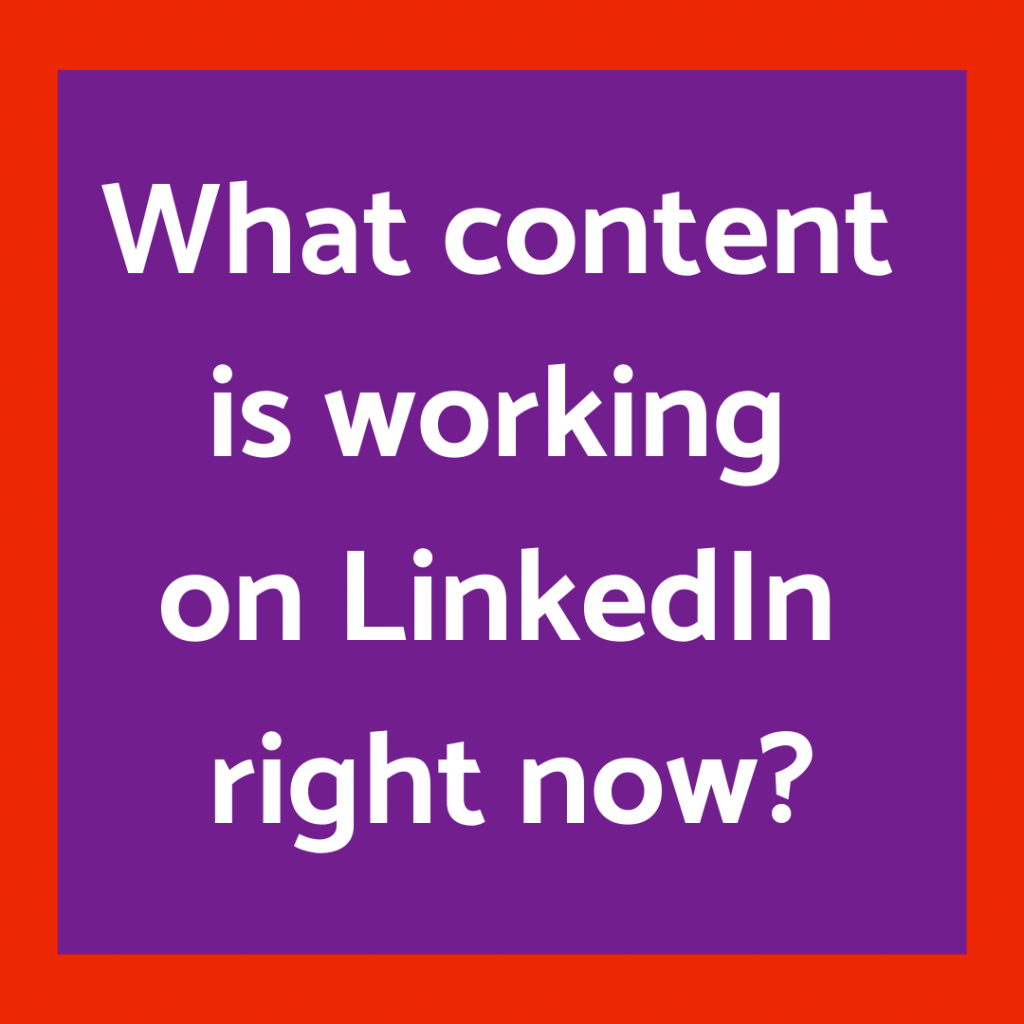Do you spend hours researching and then writing a blog or a LinkedIn post? (see: ‘How to write scroll stopping posts on LinkedIn‘) You scour the internet for an appropriate image to accompany the post. Check for typos, final edit, final edit again and then ‘POST’.
You feel proud – and quite rightly. You’ve done the work, you’re appealing to your audience and you’ve created something of value for them.
Then you wait… and watch… One impression, then another, someone comments so you reply immediately. You’re scrolling through your feed to be active on LinkedIn to help the algorithm (as Sarah told you!).
In contrast:
The following day you’re at an event and you decide to post about it. A quick snap of you and a colleague, a few words about what a good time you’re having, a tag or two and post. You get caught up in the event and forget about ‘nurturing’ the post. On your way home you pop over to LinkedIn to have a look and you see the post has got over 400 impressions, 36 reactions and 12 comments!
Frustrating isn’t it?
We don’t need to have a deep understanding of how the LinkedIn algorithm works here. What we need to do is look at our own results and react to them. We need to be flexible and realise that the algorithm changes and we should adapt to it. But the most important thing to remember is to give our audience what they want.
We are seeing a ‘trend’. We are seeing that successful content – in July 2022 – tends to be shorter form posts without images. For some people, personal content is working well – but not for all.
Does this mean that we should all ditch our longer form pieces and only post a few lines about ourselves every day?
NO!
There are 3 key reasons why it’s important to adopt a more strategic approach.
1) This is a ‘trend’, not a firm rule. What works for one person may not work for you. My advice to you is to test different forms of content and look at the following metrics:
· Reactions on each post
· Comments on each post
· Profile views on the day of posting – measure the day before and the day after
2) If all you post is one type of content, people will get ‘content fatigue’, they’ll get bored of reading the same kind of information from you all the time and they’ll start to scroll by.
3) You never know who is reading. There are many people on LinkedIn who consume content but never ‘react’. They’re looking for value, for information. If you can provide that, then you will appeal to them.
Likes are a vanity metric – they make us feel good but do they convert to customers? Your longer form content is your thought leadership content so it’s still important that you show people what you know.
So, in answer to my original question – ‘What content is working on LinkedIn right now?’
Yes – shorter form content
Yes – more personal content
Yes – content without images
BUT
Always think, what is working for YOU right now? You will only know by trial, error and hopefully, success!
What content is working for you right now? I’d love to hear your thoughts below.
If you want to know more about how to create content on LinkedIn, please send me a DM and let’s chat!
Sarah ????
